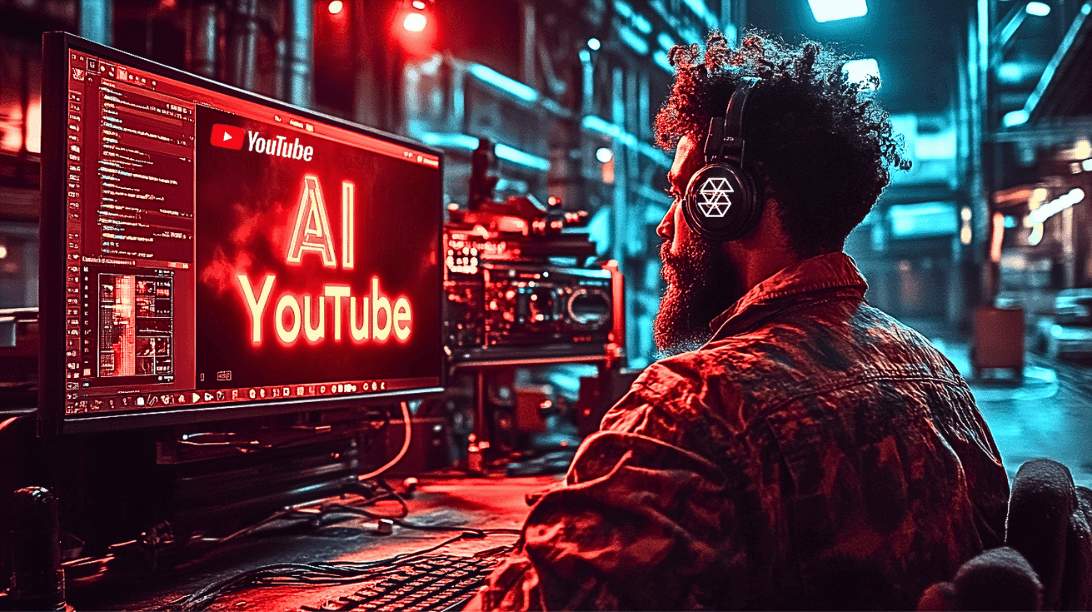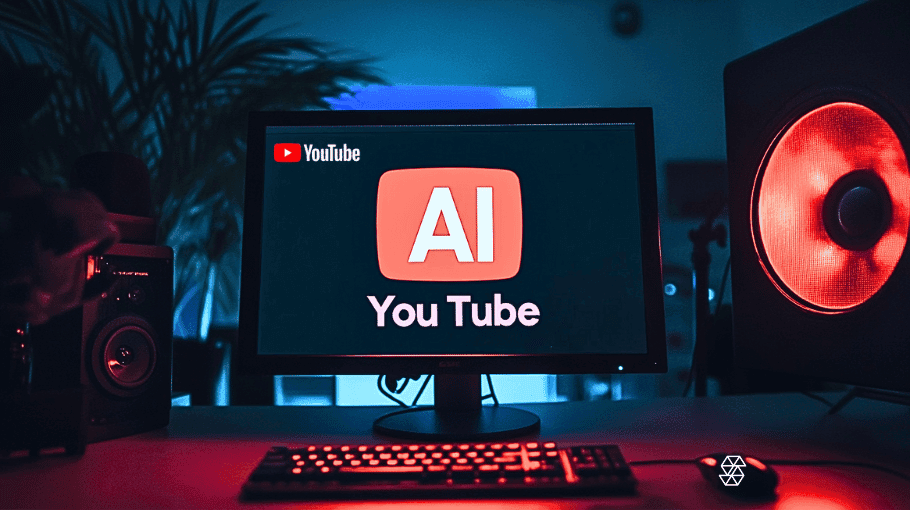ChatGPT와 클로드 3: 어떤 LLM이 더 낫나요?
다음과 같은 대규모 언어 모델(LLM)은 ChatGPT 및 클로드 3 는 자연어 처리, 창의적 글쓰기, 문제 해결 분야에서 놀라운 능력을 보여주며 AI 시스템의 한계를 뛰어넘고 있습니다. 기업과 개인이 다양한 애플리케이션에 AI의 힘을 활용하고자 할 때, 이러한 선도적인 LLM 간의 차이점을 이해하는 것이 중요합니다.
OpenAI가 개발한 ChatGPT는 인간과 유사한 응답을 생성하고 다양한 프롬프트에 적응하는 능력 덕분에 출시 이후 큰 인기를 얻고 있습니다. 반면, 최근 다양한 벤치마크에서 고급 추론 능력과 언어에 대한 미묘한 이해를 보여주며 강력한 경쟁자로 떠오른 앤트로픽의 클로드 3는 ChatGPT를 추월하고 있습니다.
이 글에서는 클로드 3와 ChatGPT를 비교하여 주요 기능, 성능 지표, 다양한 사용 사례에 대한 적합성을 살펴보겠습니다. 이 글이 끝나면 마케팅 활동을 강화하려는 기업이나 창의적인 프로젝트를 위해 AI의 힘을 활용하려는 개인 등 특정 요구사항에 어떤 LLM이 더 적합한지 보다 명확하게 파악할 수 있을 것입니다.
앤트로픽의 클로드 3 이해하기
Anthropic의 최신 제품인 Claude 3는 AI 커뮤니티에서 큰 반향을 일으키고 있는 강력한 대규모 언어 모델입니다. 이전 모델의 성공을 바탕으로 구축된 Claude 3는 세 가지 모델 크기로 제공됩니다: 하이쿠, 소네트, 오푸스. 각 변형은 다양한 사용 사례와 성능 요구 사항을 충족하므로 사용자는 필요에 따라 가장 적합한 모델을 유연하게 선택할 수 있습니다.
이 AI 모델은 방대한 데이터를 학습하여 복잡한 개념을 파악하고 다양한 프롬프트에 대한 통찰력 있는 답변을 제공할 수 있습니다. 또한 Claude 3는 코딩 작업에도 탁월하여 워크플로우를 간소화하려는 개발자와 데이터 과학자에게 매우 유용한 도구입니다.
클로드 3의 또 다른 주목할 만한 점은 최대 100만 개의 토큰을 수용할 수 있는 확장된 컨텍스트 창입니다. 이를 통해 모델은 컨텍스트에 대한 깊은 이해를 유지하고 보다 일관성 있고 컨텍스트와 관련된 결과물을 생성할 수 있습니다. 인상적인 기능을 갖춘 Claude 3는 콘텐츠 제작, 연구, 고객 지원 등 다양한 영역에서 활용되고 있습니다.

OpenAI의 ChatGPT 이해
OpenAI의 아이디어로 탄생한 ChatGPT는 AI 언어 모델 분야에서 유명세를 떨치고 있습니다. 뛰어난 자연어 처리 및 생성 능력으로 잘 알려진 ChatGPT는 대화형 AI의 높은 벤치마크를 설정했습니다. 이 모델은 다양한 작업과 프롬프트에 적응할 수 있을 뿐만 아니라 맞춤형 GPT를 제공하기 때문에 커뮤니케이션 프로세스를 자동화하고 개선하고자 하는 기업과 개인이 가장 많이 선택하는 모델이 되었습니다.
ChatGPT의 주요 강점 중 하나는 현재 타의 추종을 불허하는 인상적인 멀티모달 기능에 있습니다. 텍스트 기반 상호 작용에만 초점을 맞춘 다른 많은 AI 모델과 달리 ChatGPT는 사용자가 텍스트, 오디오, 문서, 이미지 등 다양한 입력 형식을 사용하여 모델과 소통할 수 있습니다. 이러한 다재다능함 덕분에 ChatGPT는 콘텐츠 제작 및 분석부터 고객 지원 및 연구에 이르기까지 광범위한 애플리케이션에 매우 강력한 도구가 될 수 있습니다.
이 모델의 적응성과 멀티모달 기능 덕분에 다양한 산업과 사용 사례에서 채택되고 있습니다. 콘텐츠 생성 도구부터 지능형 가상 어시스턴트까지 ChatGPT는 워크플로우를 간소화하고 사용자 경험을 개선하는 데 있어 그 가치를 입증했습니다. OpenAI는 ChatGPT를 지속적으로 개선하고 업데이트하면서 인공지능 언어 모델 환경의 선두에 서서 인공지능으로 가능한 것의 경계를 끊임없이 넓혀가고 있습니다.

성능 비교 및 벤치마크
Claude 3와 ChatGPT의 성능을 평가할 때는 다양한 벤치마크와 실제 애플리케이션을 고려하는 것이 중요합니다. AI 모델의 효과를 평가하는 데 널리 사용되는 벤치마크 중 하나는 GSM8K 테스트는 수학 단어 문제를 푸는 모델의 능력을 측정하는 벤치마크입니다. 이 벤치마크에서 Claude 3 Opus는 95.0%를 기록해 GPT-4의 92.0%에 비해 기본 GPT-4 모델보다 우수한 성적을 거두었습니다. 그러나 GPT-4 터보 모델은 동일한 테스트에서 95.3%를 기록하여 두 모델을 모두 능가했습니다.

입력 및 출력의 다양성 측면에서 Claude 3와 ChatGPT는 서로 다른 기능을 제공합니다. Claude 3는 텍스트 및 시각적 입력을 처리할 수 있어 이미지에서 인사이트를 추출하고, 그래프와 차트를 읽고, 분석된 데이터를 기반으로 텍스트 출력을 생성할 수 있습니다. Claude 3 소네트 모델은 사용자가 최대 10MB 크기의 문서를 최대 5개까지 업로드할 수 있어 문맥을 처리하고 이해하는 능력이 더욱 확장되었습니다.
반면, ChatGPT의 멀티모달 기능을 통해 문서, 텍스트, 시각 및 오디오 입력을 처리할 수 있어 다양한 애플리케이션을 위한 다목적 도구로 활용할 수 있습니다. 또한 ChatGPT의 GPT-4V 버전은 텍스트 또는 시각적 프롬프트를 기반으로 새롭고 독특한 이미지를 생성할 수 있어 시각적 콘텐츠 제작이 필요한 기업 및 개인에게 강력한 솔루션을 제공합니다.
프롬프트 팔로잉과 응답 품질은 AI 모델을 비교할 때 고려해야 할 또 다른 중요한 요소입니다. 클로드 3 오푸스 모델은 주어진 프롬프트에 대해 10개의 논리적인 결과물을 생성한 반면, GPT-4는 9개의 결과물을 생성하여 GPT-4에 비해 우수한 프롬프트 팔로잉 기술을 보여주었습니다. 그러나 동일한 테스트에서 클로드 3 소네트 모델은 7개의 논리적인 문장만 생성하여 이 측면에서 GPT-4가 클로드 3 소네트보다 우수한 성능을 보여주었습니다.
이러한 성능 비교는 의도된 사용 사례에 따라 각 AI 모델의 구체적인 장단점을 신중하게 평가하는 것이 중요하다는 점을 강조합니다. Claude 3 Opus는 특정 벤치마크와 프롬프트 팔로잉 작업에서 탁월하지만, ChatGPT의 멀티모달 기능과 GPT-4 터보 변형의 성능으로 인해 다양한 애플리케이션에서 강력한 경쟁자가 될 수 있습니다.
어떤 것이 마케팅에 더 좋을까요?
Skim AI는 콘텐츠 제작 스택에서 Claude 3 및 ChatGPT와 같은 AI 모델을 활용한 광범위한 경험을 보유하고 있습니다. 시간이 지남에 따라 Claude 3가 ChatGPT에 비해 제공하는 몇 가지 주요 이점 때문에 서면 콘텐츠 및 마케팅 자료 생성에 점점 더 많이 의존하고 있습니다.
마케팅 목적으로 Claude 3를 사용할 때 가장 중요한 이점 중 하나는 ChatGPT에 비해 더 빠른 출력물 생성입니다. 빠르게 변화하는 콘텐츠 제작 환경에서는 시간이 가장 중요한데, Claude 3의 빠른 응답 시간 덕분에 저희 팀은 더욱 효율적으로 작업할 수 있습니다. 또한, Claude 3는 출력 생성 중 장애가 발생하는 경우가 적은 반면 ChatGPT는 응답 중간에 장애가 발생하여 워크플로우에 차질을 빚는 경우가 종종 있었습니다.
클로드 3의 또 다른 장점은 반복적인 콘텐츠를 덜 생성할 수 있다는 점입니다. 마케팅 자료를 만들 때 반복은 참여도 부족과 타겟 고객에 대한 영향력 감소로 이어질 수 있기 때문에 큰 문제가 될 수 있습니다. 저희의 경험에 따르면 ChatGPT는 동일한 아이디어와 문구를 반복하는 경향이 있어 콘텐츠의 전반적인 품질에 해를 끼칠 수 있습니다. 반면에 Claude 3는 더 다양하고 다양한 결과물을 생성하여 마케팅 메시지가 신선하고 매력적으로 유지되도록 보장합니다.
또한 클로드 3의 출력은 ChatGPT에 비해 더 사실적이고 인간적이며 과장되지 않은 경향이 있습니다. 메시지의 신뢰성을 떨어뜨릴 수 있는 지나치게 극적이거나 과장된 표현을 피하고 적절한 어조를 유지하는 것이 중요합니다. ChatGPT는 '혁명적', '현실에서', '진화하는 디지털 환경'과 같은 문구를 사용하는 경향이 있는데, 이는 지나치게 선정적이거나 진부한 표현으로 보일 수 있습니다. Claude 3의 보다 신중하고 현실적인 언어 접근 방식은 진정성 있고 공감할 수 있는 마케팅 콘텐츠를 만든다는 목표에 더 잘 부합합니다. (단, 이러한 접근 방식은 모델에게 메시지를 전달하는 방식과 관련이 있다는 점에 유의해야 합니다.)
AI 콘텐츠 제작 스택에서 Claude 3의 강점을 활용함으로써 Skim AI는 더 짧은 시간 내에 고품질의 마케팅 자료를 제작할 수 있었습니다. 이 모델의 빠른 출력, 반복 감소, 보다 사실적인 언어는 고객을 위한 매력적이고 효과적인 콘텐츠를 제작하는 데 매우 유용했습니다.
ChatGPT와 클로드 3: 어떤 것을 선택해야 할까요?
심층적인 비교를 통해 다양한 벤치마크에서의 성능, 입력 및 출력의 다양성, 즉각적인 팔로잉 기능, 마케팅 애플리케이션에 대한 적합성, 콘텐츠 제작에 사용한 개인적인 경험 등 이들 모델 간의 주요 차이점을 강조했습니다.
Claude 3와 ChatGPT 모두 인상적인 기능을 제공하지만, 각 모델마다 장단점이 있는 것은 분명합니다. 특히 Opus 버전인 Claude 3는 특정 벤치마크와 프롬프트 팔로잉 작업에서 뛰어난 성능을 보여 주었기 때문에 고급 추론과 언어 이해가 필요한 애플리케이션에 탁월한 선택이 될 수 있습니다. 또한 빠른 출력 생성, 반복 작업 감소, 보다 사실적인 언어 덕분에 마케팅 및 콘텐츠 제작에 유용한 도구로 활용할 수 있습니다.
반면, ChatGPT의 멀티모달 기능과 GPT-4 터보 버전의 성능은 다양한 애플리케이션을 위한 다재다능하고 강력한 옵션입니다. 텍스트, 오디오 및 시각적 입력을 기반으로 응답을 처리하고 생성하는 기능은 여러 영역에서 AI 기술을 활용하고자 하는 기업에게 새로운 가능성을 열어줍니다.
궁극적으로 클로드 3와 ChatGPT 중 어떤 것을 선택할지는 각 개인 또는 조직의 구체적인 사용 사례와 요구사항에 따라 달라집니다. 각 모델의 강점과 한계를 신중하게 평가함으로써 기업은 정보에 입각한 결정을 내리고 목표와 목적에 가장 부합하는 LLM을 선택할 수 있습니다.
Claude 3와 ChatGPT와 같은 AI 모델 간의 경쟁이 계속 심화됨에 따라 자연어 처리 및 생성 분야에서 더욱 발전하고 획기적인 발전을 기대할 수 있습니다. AI의 미래는 의심할 여지 없이 흥미진진하며, 기업은 최신 개발 및 트렌드에 대한 정보를 지속적으로 파악함으로써 이러한 강력한 도구의 잠재력을 최대한 활용하고 끊임없이 진화하는 디지털 환경에서 앞서나갈 수 있습니다.






